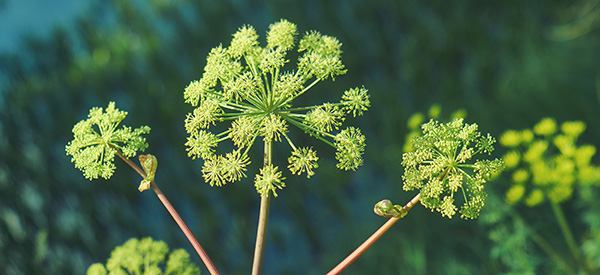
Plant of The Week: Angelica
Angelica is a perennial herbaceous plant that is also known as European or Garden Angelica. It is a pretty, delicate but robust herb that is part of the parsley family. It self-seeds and is quick to establish itself where conditions are optimal.
Various parts of the plant have been used in medicinal preparations and in cooking for centuries. It is also the primary plant flavoring in both gin and Benedictine. On its own, it has an earthy, slightly bitter taste that has been compared to the taste of juniper berries.
While there are approximately thirty different varieties of Angelica, the focus in this article is specifically on Angelica Archangelica or Archangelica Officinalis due to its medicinal value that many other varieties lack.
The History of Angelica
This plant can be found in records in Northern Europe dating back as far as the 10th century, and it is thought that it has been cultivated for many centuries. It is recorded as both a food and as a source of medicine for an astonishing range of illnesses and even for cases of poisoning.
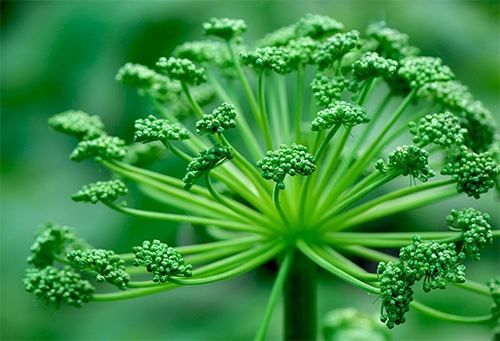
There are two popular myths concerning how this plant came by its name. The first is that the herb was revealed by an angel to a priest in a dream. This angel told him that the plant would cure the plague and ward of evil. The second is that the flowers appear around the date on which the feast of St Michael the Archangel was held.
Where is This Plant Found?
Angelica grows wild in northern latitudes such as the Scandinavian countries, Iceland, Lapland, Greenland, Russia, and much of Northern Europe. However, it is now also found in various parts of the United Kingdom where it self-seeds readily. In addition, it is cultivated in the cooler regions of the United States of America and even—surprisingly—in parts of Spain.
How to Identify Angelica
This plant is not too difficult to identify but, as always, you need to be sure about identification before you use any part of a plant.
The first aspect of Angelica is its size and hardiness. These plants, in particular the flower stalks, can reach heights of 6 – 8 feet or 1.8 – 2.4 meters.
Secondly, every part of the plant, including the root, is aromatic and smells rather like musk or juniper. Each part, however, deserves a description:
Flower: As with everything else with the Angelica plant, the flowers are dramatic. They form as grapefruit-sized clusters (or umbels) of numerous tiny, fragrant, greenish-white flowers.
Leaf: The leaves are large, bright green, and have serrated edges. They are on long stalks and have clear, deep veins.
Stem: The strong stems are hollow and fluted or ridged. They can reach heights of 4 – 6 feet or 1.2 – 1.8 meters, and the bases are often slightly Purple.

Root: The roots of this plant are also distinctive. They are long, thick, fleshy, and spindle-shaped. Each larger root has numerous smaller, descending roots emerging from it. Even small or young plants have a heavy bundle of these roots.
Fruit: The fruits form as the blooms fade. They are oblong, pale yellow, and are only approximately ¼ inch or 6.3 millimeters. They have three ribs and each fruit has slightly flattened edges on one side and convex edges on the other. Like the flowers, the fruit is aromatic.
Seed: The seeds form from the dried fruit and as a result are ridged and oval with one concave side. They are found on the plant in late summer and early autumn.

Each aromatic part of this robust plant can be used in some way or another. This makes the fact that it can be cultivated with ease of good news.
How to Grow Angelica
It’s not suggested that you try to grow Angelica from seeds as they have a low germination rate. If you want to try planting seeds you must do so as soon as the seeds are dry; they don’t keep well. Plant them in shallow soil and don’t press them down. Seeds should be spaced a minimum of 15 inches / 38 centimeters apart.
This plant can be grown from cuttings or offshoots or by dividing and replanting older roots. However, these methods should be left to those who are more experienced with these types of propagation or who just want smaller plants for the show in their garden. More robust and potent plants are grown from fresh seeds.
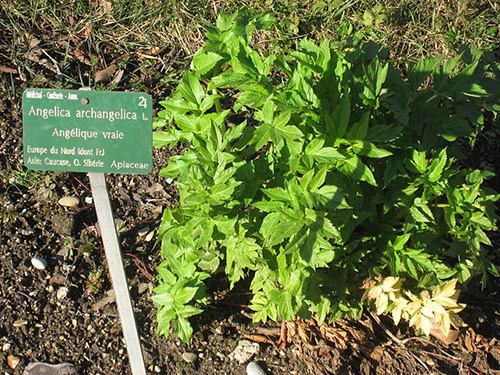
Your best option for growing Angelica? Buy seedlings or plugs that you can plant directly into the bed or large pot in your garden.
Angelica particularly likes to grow near water or in damp soil. However, while moist soil is ideal, it should be well-drained or the roots will rot. These vigorous plants are happy in part-shade or in sun and can even endure frost. They are also pest resistant.
You must remove the flower heads before they mature and go to seed as the plant naturally dies after doing so. Removing the flower heads and harvesting leaves will both prolong the life of the plant and prevent it from becoming too large!
How to Harvest This Plant
If you are growing Alicia to use the plant for consumption as food or a remedy you will need to harvest in the appropriate way and at the best times. Various parts of the plant are harvested at different times:
- Leaves can be cut as needed in late spring and early summer.
- Flowers should be harvested before they bloom fully so they don’t go to seed… unless you want seeds!

- Stems or the whole plant should be cut just above the roots. If you only want tender stems for candy, harvest from plants in their second year in mid to late spring when the stalks are still tender.
- Seeds are best harvested in late summer when they are ripe and already dried or drying.
- Roots should be lifted in autumn in the first year of the plant’s growth. They are far less likely to become damaged by pests or moldy at this stage in the plant’s life.
- Fruits can be shaken from the flower heads after they have been cut and left to ripen for a couple of days.
The good news is that by harvesting leaves, stalks, flowers, and seeds you will (a) have valuable plant material to use and (b) prolong the life of your Angelica.
What Parts of The Plant are Used and How?
When it comes to food and drink, the primary use of the seeds is for the flavoring of various alcohol-based drinks such as gin, vermouth, and Chartreuse. Stalks can be chopped up and stewed with fruit such as apples, used in marmalade or preserves, or—most popularly—candied for use as sweets or cake or dessert decorations. The leaves are traditionally used to flavor various dishes including soups, stews, and fish, poultry, and cooked fruit dishes.
The leaves and seeds have medicinal uses. However, it is the roots that are especially efficacious and used for health and well-being.
What Angelica is Used For
As mentioned previously, Angelica has varied uses and has done for centuries. However, for many people, the greatest value of this plant lies in its medicinal and health uses. There is strong anecdotal evidence that Angelica is beneficial for:
- Digestive issues: This herb is thought to ease bloating, gas, reflux, cramps, nausea, vomiting, and indigestion and to improve digestion. A tea made from the root, combined with a few other herbs, is often the most used.
 Respiratory problems: There is an expectorant in this plant that may ease and soothe coughs and cold and ‘flu symptoms.
Respiratory problems: There is an expectorant in this plant that may ease and soothe coughs and cold and ‘flu symptoms.- Antiviral: Some studies indicate that Angelica may help to fight Coxsackievirus B3 and Herpes Simplex 1.
- Menstrual problems: As Angelica root appears to stimulate circulation, it may ease menstrual cramps and postmenstrual syndrome.
- Anti-anxiety: It appears that this plant may also reduce levels of anxiety.
- Other: There are some records that Angelica has been used in the past to reduce fevers, ease rheumatic conditions, and treat mild bladder infections.
It should be noted that weighing against all this anecdotal and historic evidence is the fact that further study is needed, and clinical evidence is often lacking to support some of these health claims.
How to Prepare, Preserve, and Store Angelica
The preparation and storage process varies depending on which part of the plant you are working with.
- R
 oots: Wash the freshly lifted roots to remove any soil and then dry them thoroughly. If the roots are thick, slice them in half lengthwise. It is essential that the roots are dried properly and quickly, or they will become moldy. You can do this in an oven: 1200 F at first and then reduce the temperature to 1000 F after 2 to 3 hours.
oots: Wash the freshly lifted roots to remove any soil and then dry them thoroughly. If the roots are thick, slice them in half lengthwise. It is essential that the roots are dried properly and quickly, or they will become moldy. You can do this in an oven: 1200 F at first and then reduce the temperature to 1000 F after 2 to 3 hours.  Stems: If the stems are young and thin, they can be dried with the leaves attached. Thick stems should have the leaves stripped off. Dry stems by placing them on wire or net trays and place them in a dry, well-ventilated area.
Stems: If the stems are young and thin, they can be dried with the leaves attached. Thick stems should have the leaves stripped off. Dry stems by placing them on wire or net trays and place them in a dry, well-ventilated area. Seeds: Spread the seeds out over cloth in a warm, well-ventilated area to dry off. After 3 to 4 days roll the seeds gently to loosen any stalks or other debris. Put the seeds through a sieve to remove the unwanted particles. Spread the seeds out again and turn them daily. If the weather is warm, they will be ready after approximately 7 days. If conditions are cooler, leave them an additional 3 to 4 days.
Seeds: Spread the seeds out over cloth in a warm, well-ventilated area to dry off. After 3 to 4 days roll the seeds gently to loosen any stalks or other debris. Put the seeds through a sieve to remove the unwanted particles. Spread the seeds out again and turn them daily. If the weather is warm, they will be ready after approximately 7 days. If conditions are cooler, leave them an additional 3 to 4 days.
All the dried plant parts should be stored in airtight containers. If you prefer to buy Angelica products you can do so from a reputable health shop. You can purchase extract and dried roots and leaves. However, read the packaging carefully to ensure that is in fact Angelica and/or what the plant may have been mixed with.
DIY Angelica Recipe
There are several ways you could prepare Angelica: infusions, decoctions, poultices, and tea. Our focus will be on tea made from the dried root as it thought to be more beneficial than tea made from leaves and flowers.
Ingredients:
- 1 teaspoon of dried Angelica root
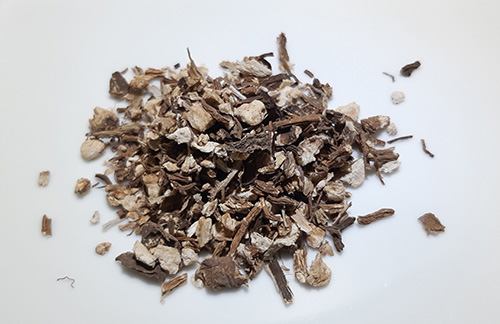
- Optional: cinnamon, ginger, anise, or honey for additional flavor.
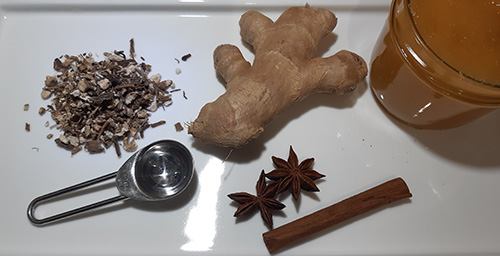
Method:
- Add the roots to a cup of freshly boiled water
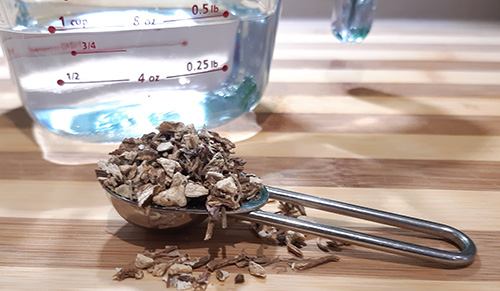
- Cover the tea and leave it to steep or draw for 10 – 20 minutes
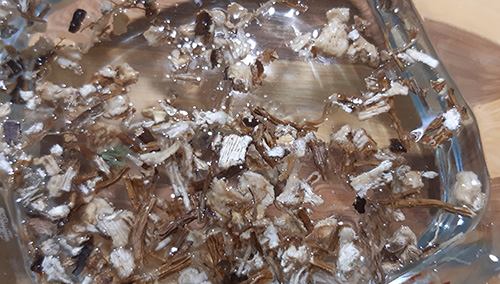
- Strain the liquid into a clean cup or container
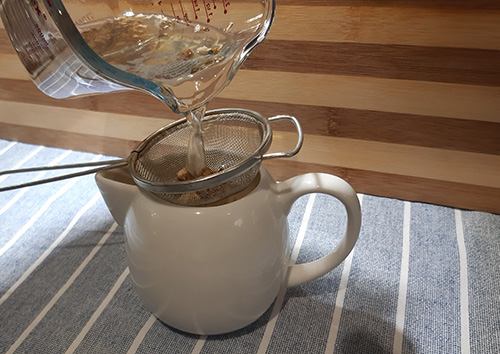
- Add your selected extra such as honey, if any, and stir it in while the tea is still warm.
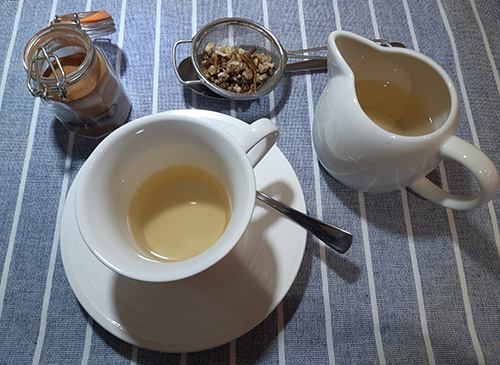
As you won’t drink it all at once, cover the rest of the tea and keep in somewhere cool and out of direct light. If you like your tea chilled, store it in the fridge.
Dosage
The dose or suggested amount if you are drinking the tea to improve your digestion and give you a general lift is 1/3 cup of tea which should be consumed 30 minutes before a meal. In other words, you have 1 cup of tea daily, divided into three doses.
If you are using a store-bought product, the manufacturer should supply dosage and storage directions on the packaging which should be adhered to.
Lookalikes:
Make sure not to confuse angelica with water hemlock or giant hogweed. Both are very dangerous. Both water hemlock and angelica grow in similar habitats and from far away, you will notice that both have white flowering tops in umbels. They are also both around the same size. A distinguishing factor is that hemlock has purple splotching, especially near the base. This may get confusing, but angelica has more of a solid purple stem. Water hemlock stems are also hairless and hollow.

There are usually far more umbels on water hemlock than angelica. Because of the toxic nature of this lookalike, do not take any chances and do not dig up the plant if you even slightly suspect it may be water hemlock. The leaves of water hemlock look significantly different than angelica. They resemble wild carrot, in that they are triangular, hairless, lacy, and compound.
Giant hogweed is also tall with white flowers on top, but gets very tall, even up to fifteen feet tall! In addition, its stalk is much thicker than angelica. The stalk also has reddish-purple bumps and white hairs. Its leaves are large, up to three to five feet wide, and deeply incised. Stay away from this plant, as it is toxic. Both water hemlock and giant hogweed are both dangerous to be around, so if observe from a distance.
Warning and Cautions
Angelica is thought to be a safe plant to use and ingest if dosing and application instructions are followed. There are some cautions and warning to keep in mind:
- If you are on medication or suffer from any medical condition(s), especially diabetes
- It is suggested that women who are pregnant should avoid using this plant as it can cause uterine contractions
- Too much Angelica can cause an increase in the skin’s sensitivity to sunlight.
You may also like:
 God’s Pharmacy: 10 Medicinal Plants from the Bible
God’s Pharmacy: 10 Medicinal Plants from the Bible
Do This 60 Seconds Dental Trick Before Going to Bed Tonight To Rebuild Your Teeth and Gums (Video)
3 Fat Burning Plants You Aren’t Eating Right Now









 Respiratory problems: There is an expectorant in this plant that may ease and soothe coughs and cold and ‘flu symptoms.
Respiratory problems: There is an expectorant in this plant that may ease and soothe coughs and cold and ‘flu symptoms.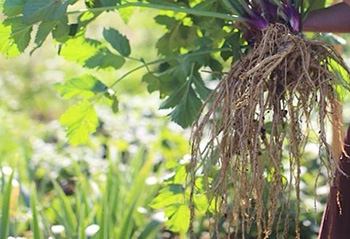 oots: Wash the freshly lifted roots to remove any soil and then dry them thoroughly. If the roots are thick, slice them in half lengthwise. It is essential that the roots are dried properly and quickly, or they will become moldy. You can do this in an oven: 1200 F at first and then reduce the temperature to 1000 F after 2 to 3 hours.
oots: Wash the freshly lifted roots to remove any soil and then dry them thoroughly. If the roots are thick, slice them in half lengthwise. It is essential that the roots are dried properly and quickly, or they will become moldy. You can do this in an oven: 1200 F at first and then reduce the temperature to 1000 F after 2 to 3 hours.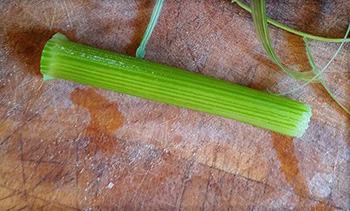 Stems: If the stems are young and thin, they can be dried with the leaves attached. Thick stems should have the leaves stripped off. Dry stems by placing them on wire or net trays and place them in a dry, well-ventilated area.
Stems: If the stems are young and thin, they can be dried with the leaves attached. Thick stems should have the leaves stripped off. Dry stems by placing them on wire or net trays and place them in a dry, well-ventilated area.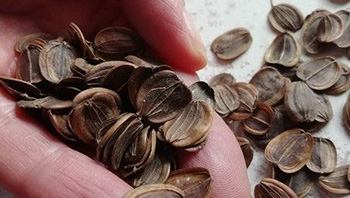 Seeds: Spread the seeds out over cloth in a warm, well-ventilated area to dry off. After 3 to 4 days roll the seeds gently to loosen any stalks or other debris. Put the seeds through a sieve to remove the unwanted particles. Spread the seeds out again and turn them daily. If the weather is warm, they will be ready after approximately 7 days. If conditions are cooler, leave them an additional 3 to 4 days.
Seeds: Spread the seeds out over cloth in a warm, well-ventilated area to dry off. After 3 to 4 days roll the seeds gently to loosen any stalks or other debris. Put the seeds through a sieve to remove the unwanted particles. Spread the seeds out again and turn them daily. If the weather is warm, they will be ready after approximately 7 days. If conditions are cooler, leave them an additional 3 to 4 days.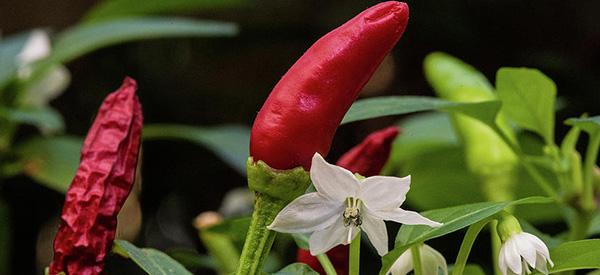
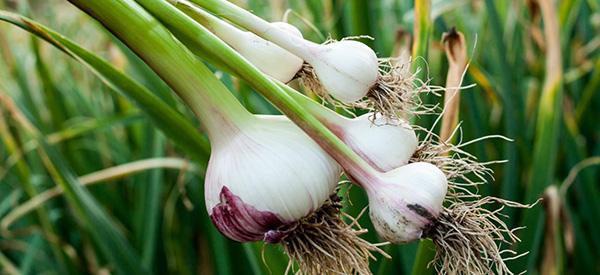
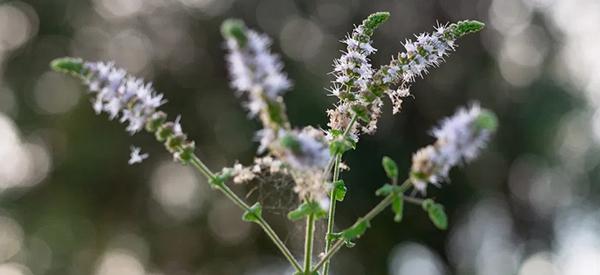
I know when I open my email from you I will ALWAYS learn something new. During these times we are trying our best to get back to our forefather’s ways of doing things and your emails are a driving force. Thank you so much for putting these together.
Hi Juliette,
Thank you so much for your feedback.
We really appreciate it.
God bless!
I love love, LOVE this idea!
Hi Pam,
Thank you for your interest in our work and for your support.
We are glad to hear you loved this idea.
Stay tuned for the next article!
God bless!
Maybe you can also recommend stores on line that sells this kind of seeds here in USA…I love the flowers of Angelica being unique in shape and color…to be incorporated with other cut flowers.
Hi Erlinda,
Thank you for your interest in our work.
You can check the link below:
https://mountainroseherbs.com/search.php?search_query=angelica
God bless!
Love hearing about herbs and their uses. Thanks for sharing your knowledge. In the recipe you refer to angelica bark. As angelica is not a tree, to which part of the plant do you refer? the stem? the root? Please clarify.
Hi Jeanne,
Thank you so much for your feedback and support.
We apologize for the confusion.
The tea is made from the dried root as it thought to be more beneficial than tea made from leaves and flowers.
God bless!
Great photographs every step of the way. Thank you for all the work you put into this. Looking forward to more plants of the week!
Hi Sherry,
Thank you so much for your comment.
We are glad you liked the article.
God bless!
I found this site VERY helpful and VERY well constructed and written. The range of information was wonderful! God has blessed us with you sharing this knowledge.